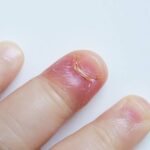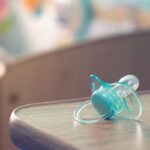As a parent, it can be difficult to watch over your kids’ every move. You’re not going to be at all the play dates or be able to monitor what they do during school days. So what dangers could your child be facing while in the classroom, or even at home in plain sight? Toxins aren’t talked about enough when it comes to the potential dangers they present for children. We hear about it in regard to processed foods and older homes, but toxic materials are actually a hazard in plenty of children’s everyday lives. As we take a deeper dive into common toxins that can be found in the home and in products, it’s important to spread awareness about asbestos, a toxin we rarely talk about impacting kids. Here is everything you need to know about asbestos and how it can impact children.
What is asbestos?
Asbestos is a toxin that doesn’t get enough publicity for how it can affect children’s health. Asbestos is a carcinogen that was used in buildings all the way up to the 1980s. Asbestos was originally used in building materials due to the natural fire and weather-resistant properties of the material. Since these materials were widely used, asbestos is still present in over 30 million houses in the United States today.
How does exposure occur in your home?
Like lead paint, Asbestos is actually not harmful to your children unless asbestos particles are disturbed. This can happen from ripping insulation, breaking roofing materials, removing tile floorings, and scrapping popcorn ceilings. It is important to take every precaution when living in a home that could potentially be holding asbestos. Taking the time to learn about how to protect your family from asbestos is a must. Even if you haven’t found asbestos in the home, it would be wise to Limit your children from playing with these materials.
Wehn fragments from these housing materials are disturbed it can cause the particles to be inhaled or ingested, which can become lodged in you or your child’s major organs. This can lead to the development of cancer that affects the lining of the lungs called Mesothelioma. Most people will not experience symptoms of mesothelioma for years, which can impact things like mesothelioma survival rate, and the ability to get an accurate diagnosis. If you found asbestos in the home, monitor your child’s health over the next few years. Pay close attention to any symptoms, such as .. basic coughing and fatigue.
Schools
As well as being found in your homes, asbestos can also be traced back to school. Like homes, asbestos products were used in multiple buildings. Although asbestos isn’t disturbed unless the particles are disrupted, this still causes concern among parents.
The biggest factor when it comes to your child’s school being at risk of exposing asbestos to their students is knowing how well the upkeep of the school building is. If you are concerned about your child’s school, you can always call your district and ask what they are doing to abide by federal requirements. On top of your child’s school potentially containing asbestos, you should also be careful of the products used inside the classroom.
Art Supplies
Some toys unfortunately hold the risk of exposing asbestos to your children. Crayons are an example, a toy that many young children tend to chew on. A recent study shows that 4 out of 28 tested boxes of crayons brands had asbestos-traced products. This causes a lot of concern because some children will start holding crayons as early as 12 months old.
It is also important to note that some home crime scene play kits have also been linked to holding asbestos in the fingerprint powder. This is especially dangerous due to the ability of the powder to become airborne and inhaled by your children. When shopping for art supplies, especially crayons, make sure to check if the brand has had a recent recall for possible traces of asbestos or other toxins.
Cosmetics
On top of your children’s toys, makeup you may use regularly can contain asbestos particles. In the wrong hands, due to playing dress up or sticky fingers, this can be a hazard. The reason why some beauty products contain asbestos is the use of talcum powder. Talc is a mineral that can be found naturally near asbestos, so while mining for talc, it could disturb asbestos particles which causes some makeup with talcum powder to be laced with asbestos. A study conducted by the FDA showed that 9 out of 52 cosmetic products contained asbestos. This includes multiple big-name brands that could be in your makeup bag or bathroom.
Some types of cosmetic products that have been linked to containing asbestos include:
- Powders
- Eye Shadow
- Blush
- Countour Palletes
Asbestos use is also NOT currently banned in makeup products. So before buying your children new makeup to play with, or even for yourself, make sure to research current items that could’ve been recalled for containing asbestos.
Taking all of this into consideration will go a long way for the safety of your children. If you are ever unsure or worried about a product or building, it will never hurt to do the research and ask questions because it will likely go a long way in protecting you and your children!
Pennsylvania Parenting Magzine is the ultimate resource for parenting news, opinions, articles, and events across the commonwealth of Pennsylvania.
We offer moms and dads stories that are timely, informative and reader-friendly on important issues such as childcare, family life, education, adolescence, motherhood, and teens. You’ll also find fun, easy and inexpensive family activities and events.
Pennsylvania Parenting Magzine reaches about 5,000 visitors per month. Our email database is comprised of 10,000+ moms and dads, while our social media reach is over 8,000 connections across the country.
For more information, please contact our managing editor, Daniel Casciato, at writer@danielcasciato.com.






